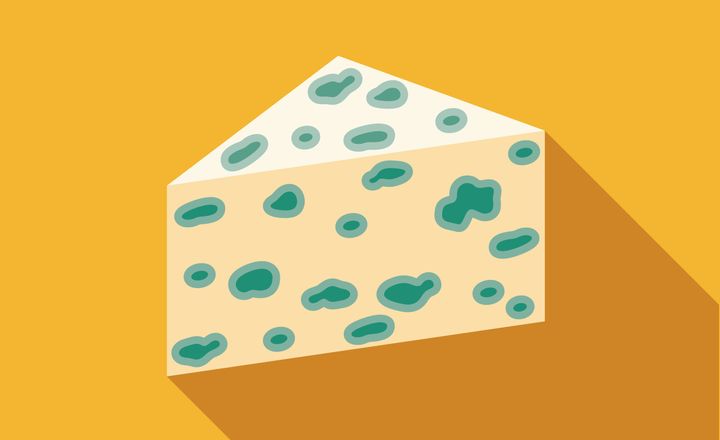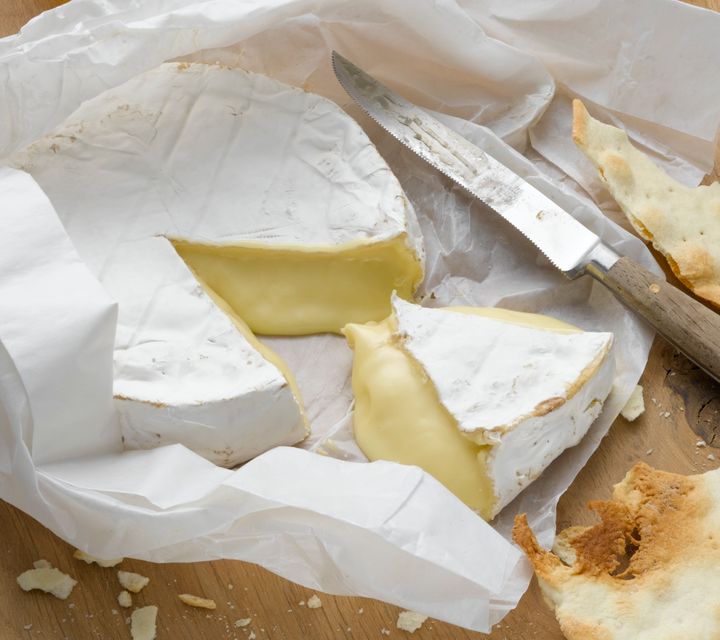
Cheese is probably something you always have on hand. But if you’re lax about taking stock of what’s in your fridge, you might notice white or green fuzz growing on it when you reach for it.
Mould and cheese have an important relationship that begins long before it hits the store shelves, but it can be tricky for the casual cheese eater to grasp. Mold plays a role in cheesemaking, but you can’t always see it. And some molds you see are safe to eat, while others are best avoided.
“All cheeses are ripened through the actions of various microbes, both invisible and visible, including moulds, fungi, yeasts and more,” explained Jamie Png, an American Cheese Society cheese industry professional. “So if you’re looking for something mould-free, you might find it difficult.”
Still, it can be unsettling to see mouldy blemishes appear on your cheese, especially if they weren’t there when you bought it. How you handle these instances depends on the type of cheese you’re dealing with. Food safety and cheese experts explain what you should know about mould and cheese.
Why do some cheeses have visible mould?
Some cheese varieties naturally have a mouldy appearance, explained Mark Johnson, assistant director at the Center for Dairy Research at the University of Wisconsin-Madison. The blue veins in a wedge of gorgonzola or the white rind on a wheel of brie are examples of mould.
Mould is often what helps cheese develop its unique flavour and characteristics. Johnson said eating these cheeses, mould and all, is “perfectly safe.”
When you buy naturally mouldy cheeses, the mould is already there, said Trevor Craig, a food safety expert and corporate director of technical training and consulting at Microbac Laboratories. “The growth should be uniform, the same colour and incorporated into the cheese.”

In contrast, new, unwanted mould usually appears on the outside edges only, Craig said. “It may also be a different colour and texture and will likely be sporing and fuzzy.”
Here’s what to do when you notice mould that shouldn’t be there.
Generally, cheese shouldn’t change much in appearance after you buy it and store it in your fridge, Png said. When you notice mould growing on cheese that shouldn’t have it, such as mozzarella, cheddar or Swiss, you shouldn’t eat it.
It most likely wouldn’t make you sick, though, Johnson said. It just wouldn’t taste very good.
For hard cheese that grows mould in your fridge, like Parmesan or cheddar, you can usually just cut off the mouldy parts and eat the rest, Craig said. Johnson said to avoid cutting directly into the mould or risk spreading it to other parts of the cheese, and to cut off an additional inch around the mould to be safe.
Soft cheeses, like ricotta or cottage cheese, are a different story. When you spot mould, Craig said you should throw away the whole container, as the mould could spread even when you can’t see it.
However, any time you see black or dark red mould growing on any cheese, throw it away, Png said. It’s rare but it can be toxic.
“Other than that, the only real consequences of ingesting most moulds will be an unpleasant taste and texture,” she said.
A few signs that cheese isn’t safe to eat.
Cheese is generally a safe product, Johnson said. Even though some cheeses can have strong flavours and odours, one of the best ways to tell if it’s gone off is if it doesn’t taste or smell like it should.
Some cheeses might develop a “kerosene flavour” or “taste somewhat like a Band-Aid,” which indicates mould might have penetrated it, he said. In those cases, throw the hunk of cheese away.
You can’t see harmful bacteria, like e.coli or salmonella, but there are some signs its growth could be happening, Craig said. For instance, pay attention to colour or texture changes, sliminess or a watery residue.
And, of course, if you spot mould that shouldn’t be there, cut it off or toss it, depending on the cheese, he said.
How to store cheese properly:
Hard cheeses can last three to four weeks after opening when stored properly, according to the U.S. Department of Agriculture. Soft cheeses usually last about a week after opening the package.
Png recommended storing cheese in the crisper drawer of your refrigerator, “ideally wrapped in cheese paper or wax paper.” This can keep moisture out, which might encourage unwanted mould growth. She said using a plastic container or plastic wrap can trap moisture in.
A plastic zip-top bag can work, too, Johnson said. But, if you have a way to vacuum seal your cheese, that’s a better option.
Store blue cheeses separately, because there’s a chance that the mold from them could spread to other cheeses, Png said.
Every few days, take a look at your cheese, she recommended. “A lot of the work of a cheese seller is maintaining the condition of cheeses in your care, by making sure to cut away any small spots of mould that inevitably develop on the surface of a healthy cheese. Doing the same with a piece of cheese you brought home will ensure that your cheese stays in great condition.”